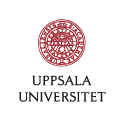Nordic Fields of Higher Education
Structures and Transformations of Organization and Recruitment, 1985-2015 (NFHE)
About the project
There is much evidence suggesting that a special model for higher education has developed in the Nordic countries during the second half of the twentieth century. This model is characterized by largely publicly-owned systems, which are relatively closely regulated by the state, include high levels of public funding and no or low student fees, and have strong influences from egalitarian traditions. In such models, higher education has also been seen as an important pillar in the welfare system, not only through the emphasis on broad and equal access, but also by educating the professionals needed for the development of the welfare state.
During the last three decades higher education systems in the Nordic countries have undergone important changes. The Bologna process has been implemented, although time tables and the degrees of adjustments have varied. The number of students has increased drastically, partially by the establishment of new institutions. Internationalization has become a more integrated part of the national systems and an increased emphasis on efficiency, competition and market orientation has been apparent. In short, the systems appear to have been transformed from cohesive and standardized systems, administered largely within the state, into more diverse and complex national and international higher education landscapes.
Our project investigates what these changes mean for the traditional Nordic model of higher education by focusing on the recruitment of students. We believe that recruitment patterns offer a key to understanding the effects of restructuring in national systems of higher education, as changes in recruitment patterns over time provide us with indicators of changing valorizations of higher education programs, fields and types of study, and institutions. Analyzing recruitment patterns also makes it possible to evaluate the function of higher education in relation to the welfare state, evidencing the role it plays in democratic goals related to equity.
The project will compare recruitment patterns across four countries: Denmark, Finland, Norway and Sweden; as well as comparing between several disciplines and higher education institutions within each country. Under-utilized and unique statistical resources that exist in the Nordic countries will provide robust data for analyses of the whole population of students in each country, and investigations of structural changes over the last three decades.
Main results
